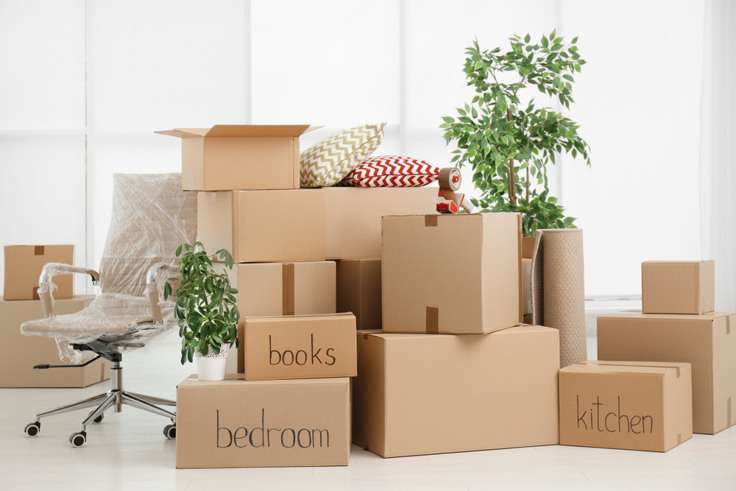Although moving to a new place is an exciting time in life, packing can sometimes be a difficult and stressful task. It is possible to transform the chaos into a seamless transition by implementing a well-structured and effective packing strategy.
We’ll walk you through each step of creating a packing strategy in this guide so your stuff gets to your new house in perfect condition.
Relocating offers you the opportunity to start over, declutter, and reassess your belongings in addition to simply moving your belongings. A packing plan is your roadmap to a successful move, reducing stress and ensuring nothing gets left behind.
When To Start Packing For A Move
To guarantee a seamless and orderly transition, it is best to begin packing well in advance of a move. Around four to six weeks before your move, you should usually start packing. As the moving day draws near, start with less-used items and work your way up to daily necessities.
We’ll go over a planned timeline in this post to help you navigate the process and be ready for moving day. We’ll offer helpful advice to ensure your packing process is quick and easy, from organising a box of necessities for your first day in your new house to taking care of non-essential things weeks in advance. These pointers will assist you in packing with precision and ease, regardless of whether you are an experienced mover or if this is your first time moving.
Assessing Your Inventory
Before diving into packing, take the time to assess your inventory. Go through each room, categorising items based on fragility, size, and importance. This step not only helps in decluttering but also serves as a foundation for an organised packing plan. Consider what items you truly need in your new space, making decisions about what to keep, donate, or discard.
Gathering Packing Supplies
Armed with your inventory, create a checklist for the packing materials you’ll need. Boxes, packing tape, bubble wrap, and packing peanuts are essentials but consider budget-friendly options. Local grocery stores often have sturdy boxes, and you can save money by asking friends or neighbours for extra supplies. For an eco-friendly move, explore options like reusable plastic bins or renting moving boxes.
Room-by-Room Packing Strategy
Approach packing systematically by breaking down the process for each room. Begin by organising the house’s less-used spaces, like the basement or attic. As you move forward, concentrate on packing the things you won’t require in the final weeks before the move. Make sure to write the contents and the room to which each box belongs on the label. This not only aids in the unpacking process but also helps movers place boxes in the correct rooms.
Use a Systematic Packing Timeline
Creating a realistic timeline is crucial for an efficient packing plan. Set a schedule that allocates specific timeframes for packing different areas of your home. Prioritise items based on their frequency of use, ensuring that essentials are packed last. By spreading the packing process over several weeks, you’ll avoid the overwhelming task of doing it all at once.
Properly Packing Fragile and Valuable Items
When it comes to delicate items, invest time in choosing the right packing materials. Bubble wrap, packing paper, and sturdy boxes are essential for ensuring your fragile possessions survive the move unscathed. Consider creating an inventory of valuable items and their conditions before packing. This not only acts as a reference but also provides peace of mind in case of any unforeseen mishaps.
Tips for Efficiently Packing Clothing and Linens
Packing clothing and linens can be simpler than you think. Instead of folding your clothes, use space-saving methods like rolling them. Invest in vacuum-sealed bags to reduce the volume of bedding and linens. Be strategic about what you pack together, grouping items by season or purpose to make unpacking a breeze.
Managing Last-Minute Packing Challenges
As moving day approaches, unforeseen challenges may arise. Stay calm and tackle last-minute packing tasks strategically. Have a designated “essentials” box containing items you’ll need immediately upon arrival. This box might include toiletries, a change of clothes, and important documents. Embrace flexibility and adapt to any unexpected delays or changes in plans.
Benefits of Hiring House Removal Services
When moving, there are many benefits to hiring a professional removal company, which can make the process go much more smoothly. Your belongings will be handled with care and transported securely, thanks to the expertise and efficiency of these professionals. Expert movers are equipped with the know-how to pack, load, and unload stuff in an organised manner, lowering the possibility of damage. Their knowledge of transportation and logistics expedites the move, saving you time and energy. In addition, a lot of moving companies provide insurance, which gives customers peace of mind in the event of unanticipated events. Entrusting your move to experts will make the process go more smoothly because you will benefit from their knowledge and will have more time to concentrate on other aspects of your transition.
Conclusion
Creating an efficient packing plan is the key to a successful and stress-free move. By assessing your inventory, gathering the right supplies, and adopting a systematic approach, you can transform the packing process into a manageable task. Remember, a well-organised move sets the stage for a positive experience in your new home. Share your packing tips and experiences with others, creating a community of support for those embarking on their moving journey. Happy moving!

